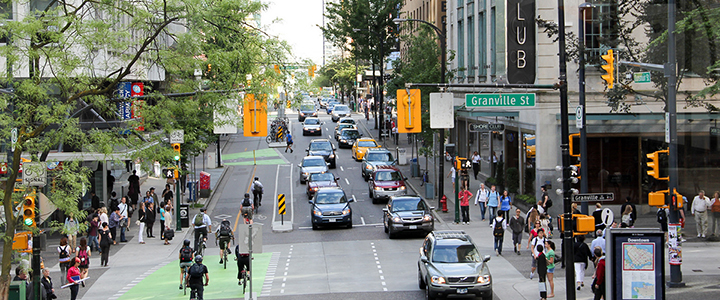

There are new transportation trends and technologies emerging that could transform the ways we get around.
The future of mobility may include shared mobility services, connected technologies, and driverless vehicles, along with other ways we already use to get around like walking, cycling, and taking transit.
Preparing for the future
As we plan for the future, we evaluate emerging technologies to understand the benefits and risks, and how they could fit into our existing transportation system.
We help advance ideas that support larger city and regional goals with new rules, infrastructure, and programs. We support TransLink on regional new mobility initiatives.
- Visit our bike share, e-scooter pilot, car share, or ride-hail pages to learn more about some of the services and programs we support
- Visit the TransLink Tomorrow External website, opens in new tab webpage to learn more about new regional mobility initiatives
